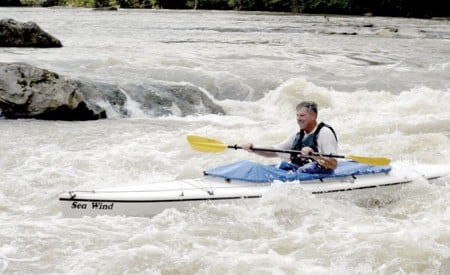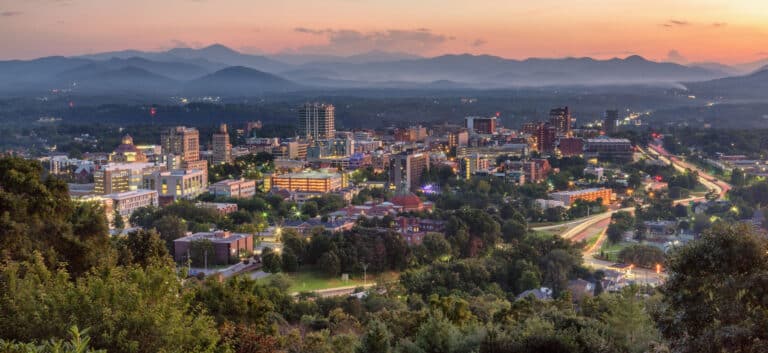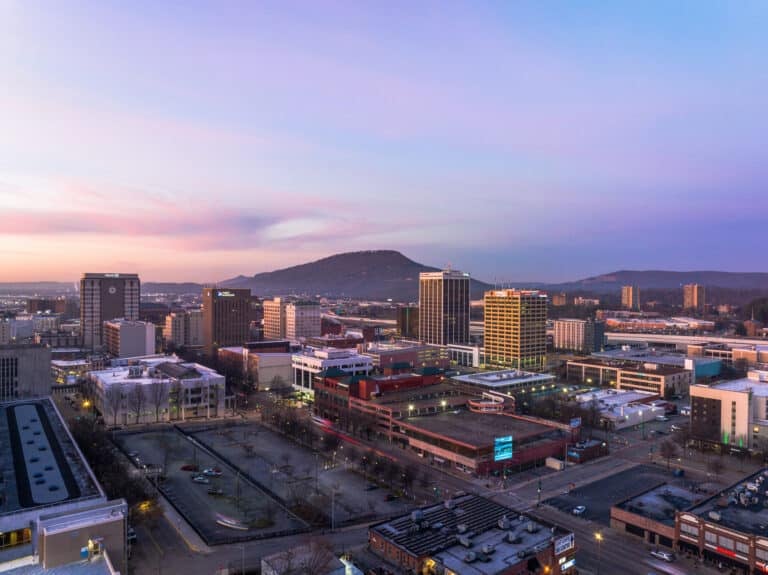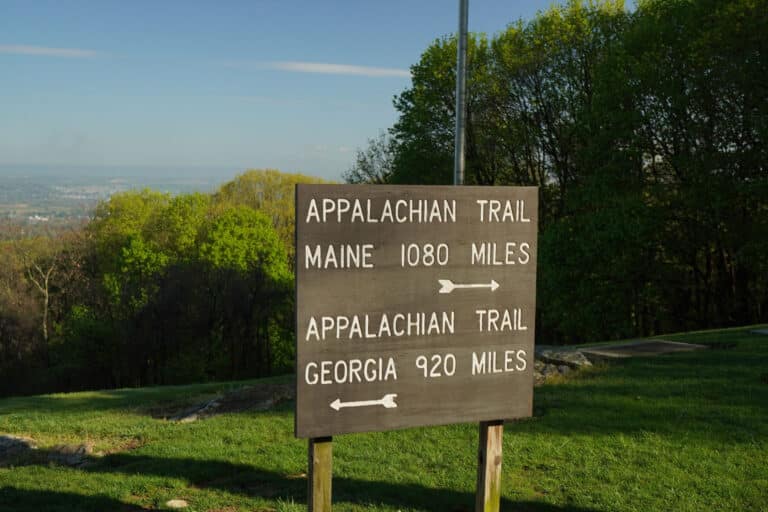Robert Fuller, a professor of environmental science at the University of North Georgia, recently spent four months paddling the length of the Chattahoochee River system, from its source spring in North Georgia to the Gulf of Mexico. Then he turned around and paddled up the Etowah River system, knocking out 1,504 river miles and monitoring the water quality of the troubled Chattahoochee along the way. We talked to Fuller about eating freshwater fish, dodging wild hogs, keeping sand out of your tent.
That’s a hell of an adventure. What made you decide to yo-yo these river systems?
Fuller: The two rivers start so close together in North Georgia, and enter the Gulf of Mexico only 200 miles apart. A friend suggested paddling the Etowah into Alabama, but I thought it would be interesting to follow a mass of water down the Chattahoochee, then paddle the Gulf and come back home on the Etowah. It was more than I thought it would be in every sense: tougher, longer, and more rewarding.
How do you follow a mass of water?
Fuller: I traced a fluorescent dye going down the river from the Chattahoochee Spring, testing the temperature, pH levels, and conductivity. Conductivity tells you a lot about the dissolved minerals in the water. It shows if something is being added in the water. I saw some pristine water at the Chattahoochee Spring. As soon as you get into the suburbs of Atlanta, there’s a steady increase in conductivity, indicating the runoff of minerals, most likely fertilizer from lawns.
What sort of boat were you paddling?
Fuller: A Kruger Sea Wind. It’s an expedition boat made of Kevlar. It’s 17 feet, 2 inches long with a rudder. I have a sail rig built in and a comfy seat. It weighs probably 70 pounds, and I had 350 pounds of gear. It made the portages interesting. I had to make a lot of trips. One portage took me seven trips, a quarter of a mile each time.
Half of your trip was upriver. That sounds insane.
Fuller: It was 750 miles of upriver paddling. The most difficult paddling was when I was approaching a dam. There was one dam that was releasing so much water, I averaged paddling half a mile per hour. Typically, I can paddle four miles per hour for 12 hours with an eight-minute break for lunch. That’s how long it takes to eat Beanie Weenies and canned fruit. I ate lots of Beanie Weenies. Lots of M&Ms and dried fruit too. I ate all day long, but I still lost 20 pounds.
You must have gotten into the best shape of your life.
Fuller: I built a lot of muscle and lost 20 pounds, but I developed issues in my upper spine from repetitive motion. I also developed a systemic infection in one knee that was debilitating. I spent a few days laid up on a sandbar with a fever. A guy I met on the river got me into a clinic and let me stay on his houseboat for a couple of nights until I was better.
What was life as a river rat like?
Fuller: Cold and raining. I paddled in December, January, and February. I bathed in the river. Washed my clothes in the river. My sleeping bag built up some grunge. But you slowly get used to that. The Apalachicola River has lots of sandbars, which is nice if you like camping on sandbars. I get tired of sand in the tent. I spent 13 months in Vietnam, sleeping on the ground in a monsoon. But that was 45 years ago. I’d gotten comfortable. I kept a five-gallon bucket of water by the tent and dunked my feet in before crawling inside. It worked a little.
The Apalachicola is famous for its oysters. Did you get to eat any?
Fuller: I have leukemia, so I have to be careful about raw fish. But after seeing all the stuff we send down into the Apalachicola Bay, I think my days of eating raw oysters are done regardless. I’m reluctant to eat fish in general from the Chattahoochee River if it’s caught below Atlanta.
Any moments from the trip that stick out?
Fuller: The most wonderful experience on the entire trip was when I was sailing my canoe a mile off the shore in the Gulf of Mexico, paddling at 6mph, and suddenly I was surrounded by a pod of dolphins. They started rolling close to the boat and one rolled right in front of the canoe and slapped it. It was like a bunch of teenage boys, daring each other to get closer and closer to the boat.
What’s your next adventure?
Fuller: Right now I’m working on a novel about the trip. But there are big paddling trips I want to do. Tampa Bay to the Florida Keys. Then way out there on the bucket list, I’d like to paddle the headwaters of the Missouri River. It’s longer than the trip I just did, but it’s all downstream.







